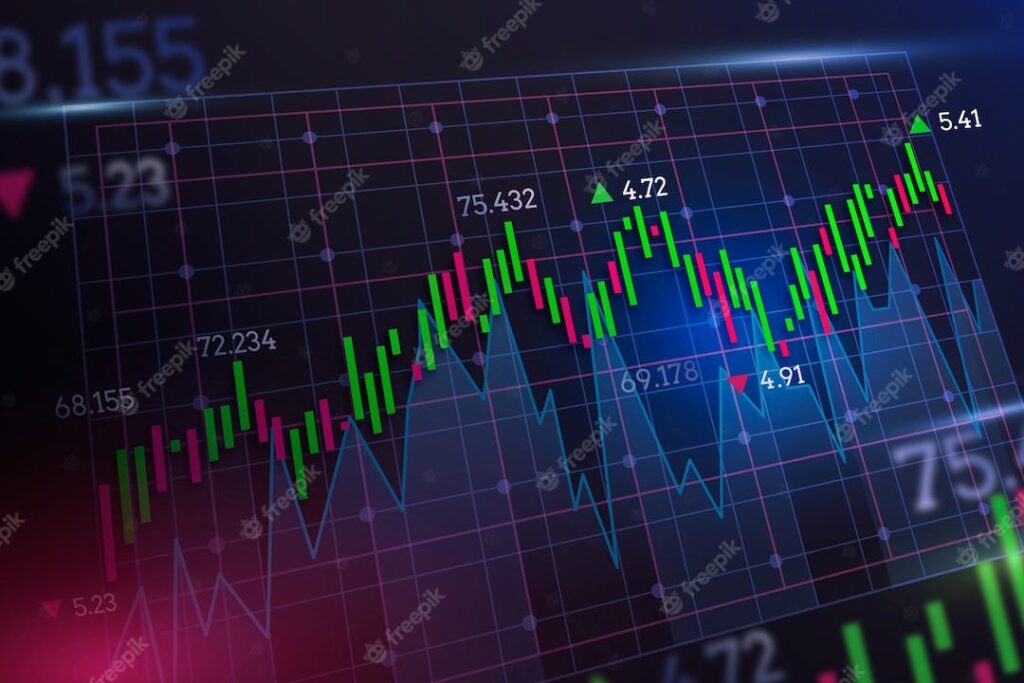In the fast-paced world of cryptocurrencies, the ability to visualize and interpret trends from price graphs is a crucial skill for investors. Understanding the intricacies of crypto price graphs enables investors to make informed decisions, identify potential opportunities, and manage risks effectively. In this detailed exploration, we will delve into the art of visualizing trends and extracting valuable insights from crypto price graphs.
- The Language of Candlestick Patterns: Candlestick charts are a cornerstone of visualizing trends in the cryptocurrency market. Each candlestick conveys a wealth of information, including the opening, closing, high, and low prices for a specific time period. Recognizing common candlestick patterns, such as doji, engulfing, and hammer, empowers investors to interpret market sentiment and anticipate potential price movements.
- Trendlines and Channels: Trendlines are powerful tools for visualizing trends. Connecting successive highs or lows on a price chart helps identify the direction of the trend. Channels, formed by drawing parallel lines around the price movement, provide a visual framework for assessing the trend’s strength and potential reversal points.
- Moving Averages as Trend Indicators: Moving Averages (MAs) are effective indicators for smoothing out price data and identifying trends. Traders commonly use the 50-day and 200-day MAs to gauge the short-term and long-term trends, respectively. Crossovers and divergences between different MAs signal potential shifts in market sentiment.

- Relative Strength Index (RSI): RSI is a momentum oscillator that measures the speed and change of price movements. RSI values range from 0 to 100, with readings above 70 indicating overbought conditions and readings below 30 suggesting oversold conditions. Visualizing RSI on a chart helps investors identify potential trend reversals and anticipate price corrections.
- Divergence Analysis: Divergence occurs when the price trend and an indicator move in opposite directions. This phenomenon can signal a potential trend reversal. By visualizing divergence between price movements and indicators like MACD or RSI, investors can gain insights into the underlying strength or weakness of a trend.
- Volume Confirmation: Visualizing trends becomes more accurate when accompanied by volume analysis. Confirming price movements with corresponding changes in trading volume provides a more comprehensive understanding of trend strength. Volume spikes often precede significant price changes, and visualizing these patterns enhances predictive capabilities.
- Pattern Recognition for Trend Continuation or Reversal: Patterns, such as triangles, flags, and head and shoulders, offer visual cues for anticipating trend continuation or reversal. Recognizing these patterns on a price chart provides investors with actionable insights, aiding in decision-making and risk management.
- Utilizing Time Frames for Trend Analysis: Visualizing trends across different time frames is essential for a holistic understanding of market dynamics. Short-term trends may differ from long-term trends, and aligning multiple time frames helps investors make well-rounded assessments of market conditions.
- The Importance of Real-Time Analysis: Cryptocurrency markets are highly dynamic, and trends can change rapidly. Real-time analysis involves constantly monitoring price charts and indicators to adapt to evolving market conditions. Visualizing trends in real-time allows investors to make timely decisions and stay ahead of market shifts.
- Conclusion: Visualizing trends in crypto price graphs is both an art and a science. Successful investors combine technical analysis with a keen understanding of market psychology to interpret visual cues accurately. By honing the skill of trend analysis, investors can navigate the crypto market with confidence, making informed decisions in the face of volatility and uncertainty.
Post Views: 113
